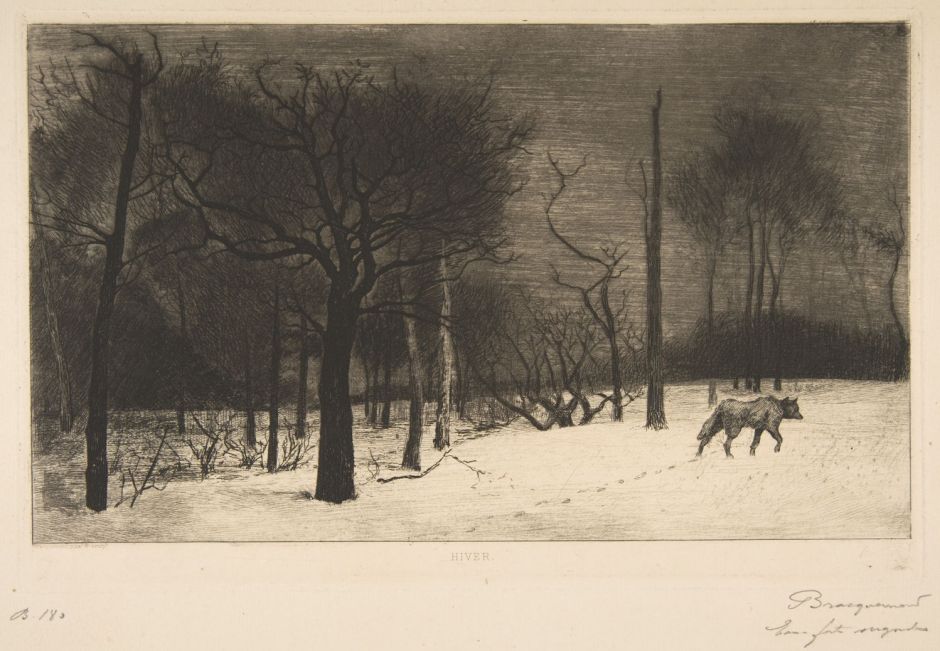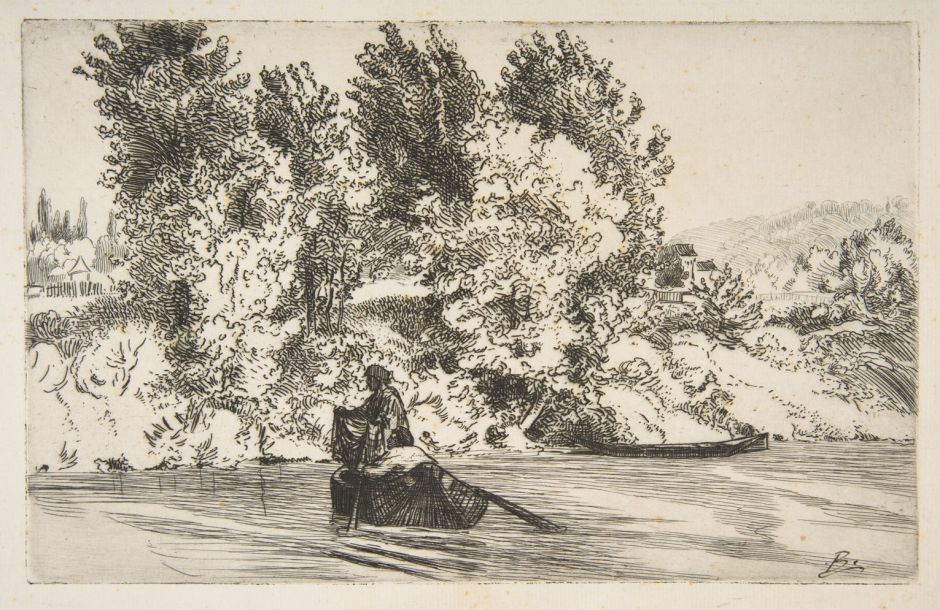At the time of the First Impressionist Exhibition in 1874, there was more to the movement than painting alone. Several of those showing their work were sculptors, and quite a few showed prints. Among the latter was Félix Bracquemond (1833-1914), who did paint early in his career but was first and foremost a prolific engraver and print-maker.
Born in Paris, he initially trained as a lithographer, but then went to work for Guichard, who had been a pupil of JAD Ingres. A portrait of his was accepted for the Salon in 1852. After that youthful success, he concentrated on engraving and etching, rather than painting, and was part of the nineteenth century revival of print-making in France. He later went to work in the Sèvres porcelain factory, before working for Haviland, the manufacturer of Limoges porcelain, in 1870.
He was a long-standing friend of Manet and Whistler, as well as Millet, Corot, Rodin, Degas and several other Impressionists. He’s thought to have been one of those who helped Claude Monet return to painting after his severe illness in Algiers in 1862. He also exhibited his etchings in the famous Salon des Refusés in 1863.
He had become an early enthusiast for Japonism, allegedly having found a small volume of Hokusai prints which had been used to pack Japanese porcelain back in 1856; for some time he apparently walked around with this book, showing everyone its prints.

His etching Winter (or Wolf in the Snow) from 1864 shows his early skills with a chiaroscuro landscape.

This more traditional etching of a Fisherman with a Net from 1868 was more typical of much of his print-making.

Nôtre Dame, Paris (1870) is an etching with added watercolour in a style more anticipatory of Art Nouveau.

Bracquemond also created many prints after famous or popular paintings. The Locomotive (1873) was among those shown at the First Impressionist Exhibition, and is made after JMW Turner’s renowned Rain, Steam and Speed (1844), below. Of all Turner’s paintings, it’s perhaps this which appears closest to the style adopted later by several of the Impressionists, and Bracquemond’s print may have encouraged that.

At the First Impressionist Exhibition, Bracquemond showed a single drawing, twelve engraved portraits, and twenty other engravings including The Locomotive. He didn’t exhibit again with the Impressionists until 1879, and again for the third and final time in 1880.

The Terrace of the Villa Brancas from 1876 is another fine traditional etching.

His Landscape from after 1885 is an unusual and exquisitely beautiful colour lithograph made later in his career. Although hardly Impressionist, its style is more closely related to the many designs he made for paintings on porcelain.

Wherries on the Bank of the Seine, made in drypoint, is undated but was probably printed during the earlier part of his career.
Bracquemond was admitted to the Legion of Honour in 1882, and went on to exhibit with Les XX in Brussels in 1885. He died in 1914, at the age of eighty-one.
Unfortunately, Félix Bracquemond had another role in Impressionism, in the suppression of one of the very few women painters in the movement, Marie Bracquemond (1841–1916). Born Marie Anne Caroline Quivoron, she had her first painting accepted for the Salon in 1857, soon became a pupil of JAD Ingres, and at the time was one of the most promising young woman painters in France.
Marie Quivoron met Félix Bracquemond in 1867, when she was copying old masters in the Louvre, and they married in 1869. At first their relationship appeared to help their art prosper, and the couple worked together at the Haviland Studio, where he was artistic director. They socialised with those in the Impressionist movement, and in about 1887 her painting started to transform under their influence.

Under the Lamp, painted by Marie Bracquemond in 1887, shows Alfred Sisley and his wife dining in the Braquemonds’ house at Sèvres, and is an outstanding Impressionist oil painting. She exhibited in the fourth Impressionist Exhibition of 1878, and the fifth in 1880, but finally abandoned painting after about 1890 as a result of her husband’s sustained attacks on her work. His main objection appears to have been her choice of mentors in Claude Monet and Edgar Degas, but there may have been a deeper misogyny too.
References:
Hans Weevers’ page with a thorough literature survey.
The First Impressionist Exhibition (in Italian), containing
the exhibition catalogue

